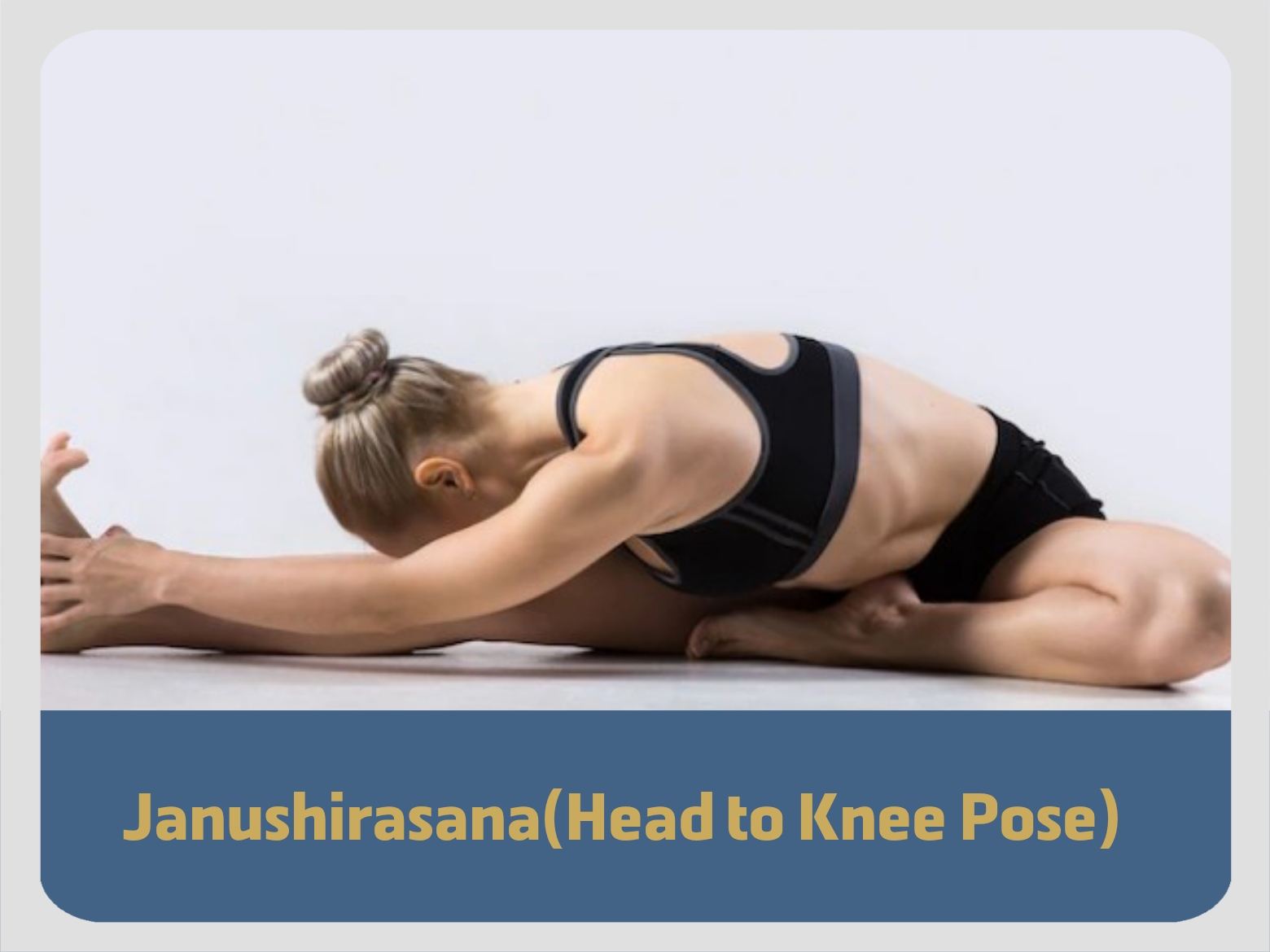Janushirsana (Head to Knee Pose)
Janu means the process of touching the head with the knees is JanuShirasana .Janushirshasana is a Sanskrit word where ‘Janu’ means knee, ‘Shirsha’ means head and ‘Asana’ means sitting, lying or standing position.
Janushirshasana is an important yoga pose among the sitting asanas. Although Shirshasana is considered the king of asanas due to its countless benefits, but Janushorsasana is also not behind it in terms of benefits. To do this asana, your body should be flexible. Today we will learn about its simple method, benefits and some precautions here.

The benefits of this asana include physical benefits such as relieving back pain, strengthening the nerves, and promoting leg length as well as mental benefits, such as giving peace and stability to the human mind. Janushirasana Regular exercise improves physical and mental health.
It benefits the entire Uttar Pradesh. It heals the kidneys and makes them strong. It easily relieves testicular disorders. Women suffering from uterine prolapse benefit from it. It brings the uterus into its original position.
It relieves disorders caused by constipation. It is written about this Mahamudra in Hatha Yoga Pradipika that it destroys death and major diseases. Its practitioner does not suffer from leprosy, leprosy, piles, spleen and many other complex diseases.
Steps To Do Janushirasana (Head to Knee Pose)
The benefit of doing any asana is achieved only when it is done correctly. To do the asana, it is important to know the correct way to do it. Know the correct way to do Janushirshasana-
1. To do Janushirshasana, first of all spread a yoga mat or sheet in a peaceful and clean place.
2. Sit with both legs extended.
3. The spine should remain straight.
4. Maintain normal breathing.
5. Place the heel of the left foot on the root of the right thigh.
6. Inhale and hold the toes of the right foot.
7. Now exhale and slowly bend down.
8. After complete exhalation, do Kumbhaka and touch the head with the right knee. Wait a while.
9. Now inhale and become straight, release the right leg.
10. Sit straight again and breathe normally.
11. Now do the same action by bending the right leg.
Benefits of Janushirasana (Head to Knee Pose)
By doing Janushirshasana, the body gets many benefits. This keeps the body healthy and we remain healthy. If you do it regularly and in the right way, you can take advantage of its benefits. Know the benefits of doing Janushirshasana in detail-
♦ Janu Shirasana is beneficial in problems related to spleen, liver, intestines and pancreas.
♦ This easily makes the muscles of the back, waist and legs flexible and hence also relieves the problems related to the nerves and veins.
♦ It is also beneficial in intestinal hernia and testicular enlargement, but it is required to be done slowly and carefully.
♦ Increases digestive power and reduces obesity.
♦ Heals the kidneys and makes them function smoothly.
♦ Makes the energy upward which increases the glow of the face.
♦ It is also beneficial in curing stomach problems like gas, constipation, acidity and indigestion.
♦ By doing this daily, the digestive system also becomes stronger and diseases related to digestion do not occur.
♦ can be done in case of thyroid problem.
♦ Doing this asana is very beneficial in thyroid.
♦ By doing this your fatigue, tension, stress and tension will be removed.
Precautions for Janushirasana (Head to Knee Pose)
1.) While touching the knee to the head, keep the knee on the ground and do not let it lift.
2.) Sciatica patients should not do this asana.
3.) Pregnant women should not do this asana.
4.) Patients with complex spine should not do this asana.
5.) One should avoid doing this asana during waist and back pain.
Frequently Asked Questions
How many minutes of Janu Sirsasana is good?
You can start Janu Shirshasana slowly for 20 seconds and then increase the time and practice the asana for 1-2 minutes. It is better to start with a few seconds at the beginning of each day and gradually increase the time.
At what time Janu Shirshasan should be done?
It is best to do Janu Shirshasana early in the morning on an empty stomach. If you want to do it in the evening, you should do it after fasting.
Read Also
- Halasana (Plow Pose) How to Do it
- Parvatasana (Mountain Pose) Benefits & Steps
- Benefits of Ardha Halasana (Half Plow Pose) Steps And Contraindications
- Simhasana (Lion Pose)- Steps & Benefits
- Benefits of Vajrasana & How to Do it
- Naukasana (Boat Pose)- Steps & Benefits